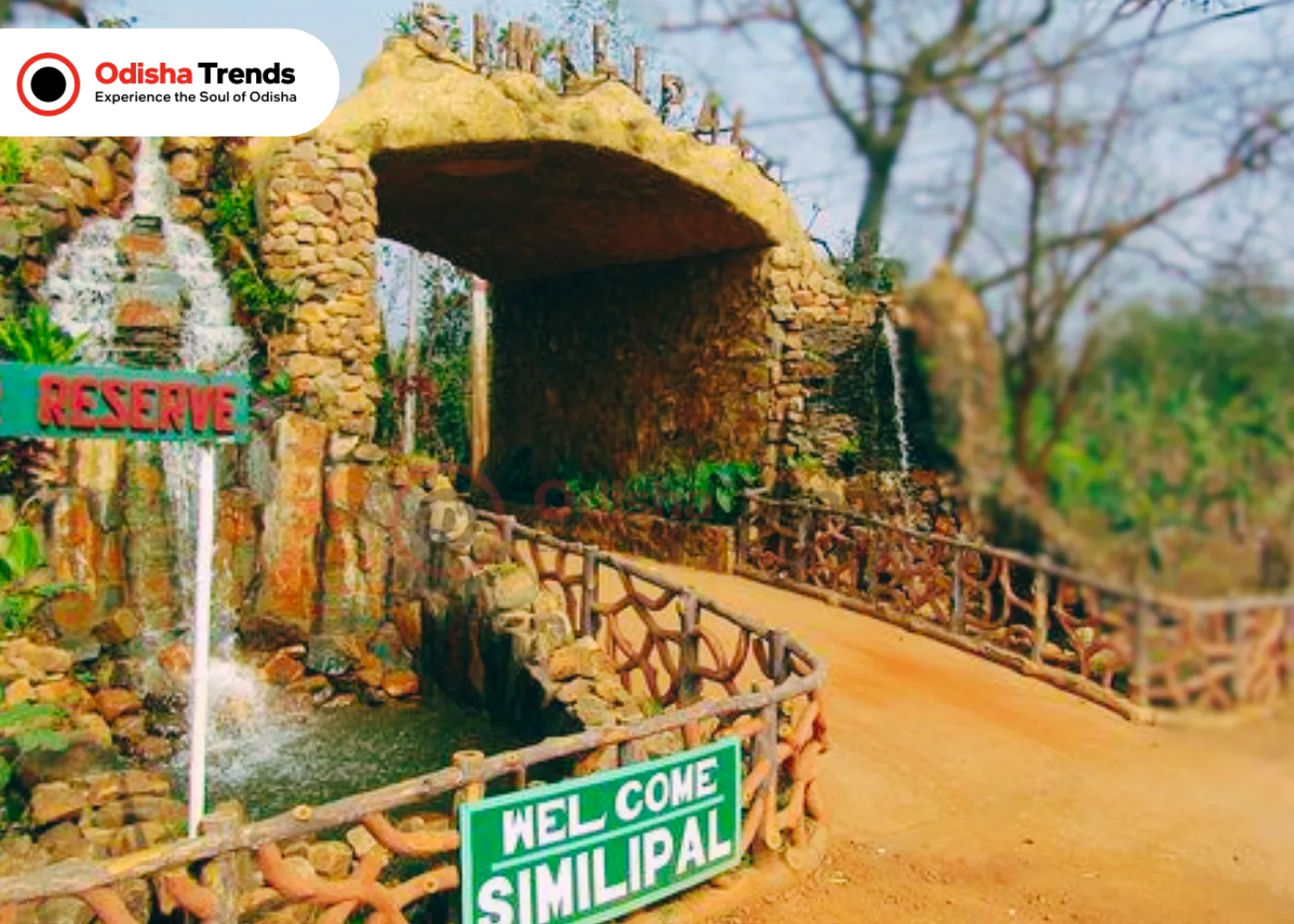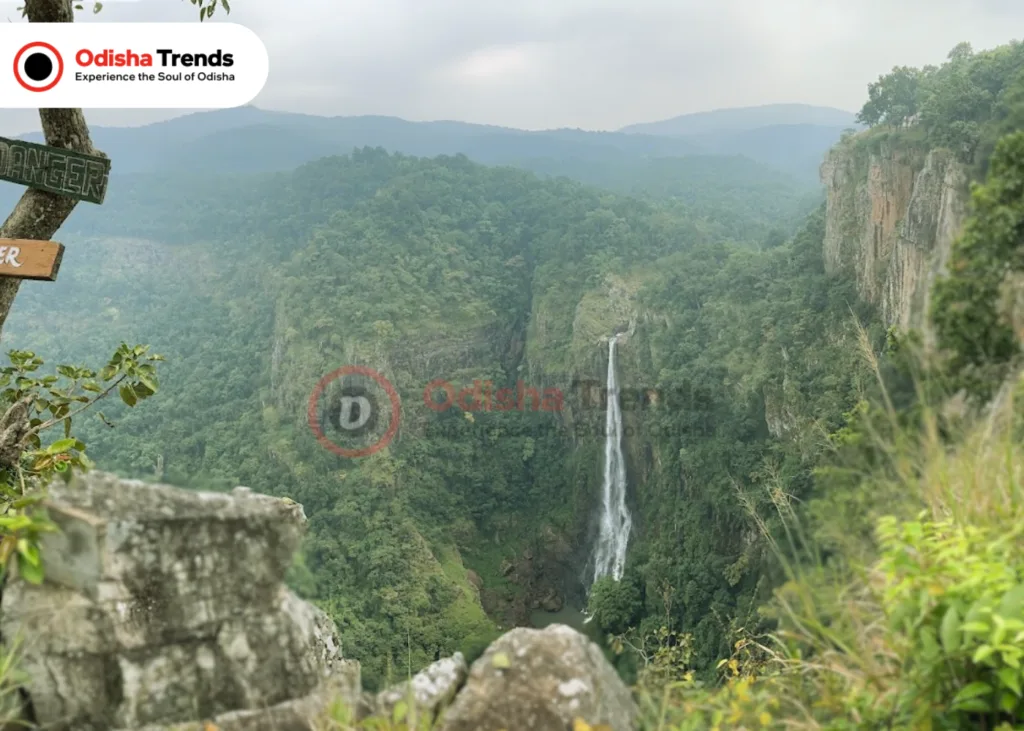Simlipal National Park, Odisha – A Biodiversity Hotspot

Simlipal National Park, located in the Mayurbhanj district of Odisha, is one of India’s most prominent tiger reserves and a biodiversity hotspot. Spanning an area of 2,750 square kilometers, it is the largest national park in Odisha and part of the UNESCO World Network of Biosphere Reserves. With its rich flora, diverse wildlife, and mesmerizing waterfalls, Simlipal attracts nature enthusiasts, wildlife photographers, and adventure seekers from across the world.
In this article, we will explore the history, geography, wildlife, tourism, conservation efforts, and latest trends of Simlipal National Park in Odisha.


History of Simlipal National Park
Simlipal derives its name from the Simul (Silk Cotton) tree, which is abundant in the region. The park was originally a hunting ground for the royal family of Mayurbhanj before being designated as a wildlife sanctuary in 1956. In 1973, Simlipal was declared a Project Tiger Reserve, and in 1994, it became a Biosphere Reserve.
Today, Simlipal National Park plays a vital role in conserving endangered species, preserving the ecological balance, and supporting eco-tourism in Odisha.
- Location and Area
- State: Odisha
- District: Mayurbhanj
- Total Area: 2,750 sq. km
- Core Area: 845.70 sq. km
- Buffer Area: 2,000 sq. km
Simlipal is part of the Eastern Ghats and consists of lush Sal forests, dense grasslands, river valleys, and beautiful waterfalls. It is also home to numerous rivers like Budhabalanga, Khairi, and Salandi, which enhance the park’s natural beauty.
Climate
- Simlipal experiences a tropical monsoon climate with three major seasons:
- Summer (March to May): Hot and humid, with temperatures reaching 40°C.
- Monsoon (June to September): Heavy rainfall and lush greenery.
- Winter (October to February): Cool and pleasant, with temperatures dropping to 14°C.
The best time to visit Simlipal National Park is November to March when the weather is ideal for wildlife sightings and trekking.
- Astashambhu Temple, Kualo, Dhenkanal
- Chandaneswar Temple : A Sacred Destination in Odisha
- Chandipur Sea Beach, Balasore, Odisha
- Dandadhar Dam, Dhenkanal
- Daringbadi – The Kashmir of Odisha
Top Attractions in Simlipal National Park



- Barehipani Waterfall
Barehipani is India’s second-highest waterfall, plunging from a height of 399 meters. Surrounded by thick forests, it is a major tourist attraction in Simlipal.
- Joranda Waterfall
Located inside the park, Joranda Waterfall cascades down 150 meters, offering a breathtaking view amidst the dense wilderness.
- Chahala Zone
Chahala is the core zone of Simlipal where wildlife sightings are frequent. Visitors can often spot elephants, deer, and even tigers in this area.
- Uski Waterfall
A lesser-known yet beautiful attraction, Uski Waterfall is a must-visit for nature lovers and trekkers.
- Sitakund
A sacred waterbody located inside Simlipal, Sitakund is a place of mythological significance and a popular picnic spot.
Eco-Tourism and Activities in Simlipal
- Jungle Safari
Visitors can explore Simlipal through a thrilling jeep safari, which covers major wildlife zones and waterfalls.
- Trekking and Nature Walks
The park offers multiple trekking trails that lead to waterfalls, watchtowers, and scenic viewpoints.
- Bird Watching
Simlipal is home to 231 bird species, making it a paradise for birdwatchers and wildlife photographers.
- Tribal Culture Exploration
The park is home to various tribal communities like the Santhals, Mankadias, and Ho tribes. Visitors can experience their rich traditions, dance, and handicrafts.
Conservation Efforts and Challenges
- Project Tiger Initiative
Simlipal is one of the first nine Tiger Reserves in India under Project Tiger (1973). The park has made significant efforts in tiger conservation and habitat protection.
- Anti-Poaching Measures
Authorities have strengthened anti-poaching patrols, camera monitoring, and community involvement to protect wildlife.
- Human-Wildlife Conflict Management
To minimize conflicts, the Odisha government has introduced compensation programs for farmers and promoted eco-tourism for sustainable development.
- Reforestation and Habitat Restoration
Afforestation programs and biodiversity conservation projects are in place to maintain the ecological balance in Simlipal.
How to Reach Simlipal National Park?
By Air:
The nearest airport is Biju Patnaik International Airport, Bhubaneswar (195 km).
By Train:
The nearest railway stations are Baripada (17 km) and Balasore (60 km).
By Road:
Simlipal is well connected by road via NH-49 from major cities like Bhubaneswar, Cuttack, and Kolkata.
Best Time to Visit Simlipal National Park
The park remains closed during the monsoon (June to October) due to heavy rainfall. The best time to visit is from November to March, when the weather is ideal for wildlife safaris and trekking.
Conclusion
Simlipal National Park is a biodiversity treasure of Odisha, offering a perfect blend of wildlife, waterfalls, and tribal culture. With its thrilling safaris, scenic landscapes, and conservation success, it remains one of India’s finest nature reserves. For nature lovers and adventure seekers, Simlipal is a must-visit destination in Odisha.
- Odisha Mudhi Mutton – The Bold, Smoky Street Food You’ve Been Missing
 When people think of Indian street food Odisha Mudhi Mutton, they often imagine chaats, momos, or biryanis. But tucked away in the heart of Odisha, especially in the districts of Baripada, Mayurbhanj, and Keonjhar, there’s a dish that defines the culture and soul of the region — Mudhi Mutton. This isn’t your typical curry and
When people think of Indian street food Odisha Mudhi Mutton, they often imagine chaats, momos, or biryanis. But tucked away in the heart of Odisha, especially in the districts of Baripada, Mayurbhanj, and Keonjhar, there’s a dish that defines the culture and soul of the region — Mudhi Mutton. This isn’t your typical curry and - Exploring Rambha, Odisha: A Scenic Paradise in the Heart of Chilika
 Nestled along the tranquil shores of Chilika Lake, Exploring Rambha, Odisha is a picturesque town in Odisha’s Ganjam district, offering breathtaking landscapes, serene backwaters, and rich biodiversity. Known as the “Kashmir of Odisha”, Rambha is a hidden gem for nature lovers, photographers, and peace seekers. Getting Around Rambha Rambha is best explored by boat and
Nestled along the tranquil shores of Chilika Lake, Exploring Rambha, Odisha is a picturesque town in Odisha’s Ganjam district, offering breathtaking landscapes, serene backwaters, and rich biodiversity. Known as the “Kashmir of Odisha”, Rambha is a hidden gem for nature lovers, photographers, and peace seekers. Getting Around Rambha Rambha is best explored by boat and - Macha Ghanta: Odisha’s Bold, Spicy Fish Curry You Must Try!
 Made with fish head, lentils, vegetables, and aromatic spices, Macha Ghanta is a nutritious and soul-satisfying dish that represents Odisha’s love for temple-style cooking. Homemade Macha Ghanta Macha Ghanta (ମାଛ ଘାଣ୍ଟ) is a temple-style fish curry where the fish head (usually Rohu or Catla) is cooked with lentils, vegetables, and spices. The term “Ghanta” means
Made with fish head, lentils, vegetables, and aromatic spices, Macha Ghanta is a nutritious and soul-satisfying dish that represents Odisha’s love for temple-style cooking. Homemade Macha Ghanta Macha Ghanta (ମାଛ ଘାଣ୍ଟ) is a temple-style fish curry where the fish head (usually Rohu or Catla) is cooked with lentils, vegetables, and spices. The term “Ghanta” means - Gopalpur Beach: Odisha’s Hidden Coastal Gem You Must Visit
 Gopalpur Sea Beach, nestled along the Bay of Bengal in the state of Odisha, is one of India’s hidden gems. Offers a perfect blend of natural beauty, historical significance, and a peaceful vibe that appeals to both laid-back travelers. History and Heritage In the 18th and 19th centuries, it served as an important trading hub,
Gopalpur Sea Beach, nestled along the Bay of Bengal in the state of Odisha, is one of India’s hidden gems. Offers a perfect blend of natural beauty, historical significance, and a peaceful vibe that appeals to both laid-back travelers. History and Heritage In the 18th and 19th centuries, it served as an important trading hub, - Daringbadi – The Kashmir of Odisha
 Daringbadi, often referred to as the Kashmir of Odisha, is a beautiful hill station located in the Kandhamal district. It is the only place in Odisha where temperatures drop to freezing levels during winter, making it a must-visit for nature lovers and adventure seekers. Surrounded by dense forests, lush green valleys, coffee plantations, and picturesque
Daringbadi, often referred to as the Kashmir of Odisha, is a beautiful hill station located in the Kandhamal district. It is the only place in Odisha where temperatures drop to freezing levels during winter, making it a must-visit for nature lovers and adventure seekers. Surrounded by dense forests, lush green valleys, coffee plantations, and picturesque
